Do you have a question about the Panasonic PT-VX605N and is the answer not in the manual?
Lists the projector model numbers covered in the manual.
Provides crucial safety warnings and precautions for operating the projector.
Details FCC and IC notices and warnings for compliance and operation.
Explains FCC/IC radiation exposure statements and compliance requirements.
Details safety instructions for the UK moulded plug and wiring.
Provides instructions for battery removal and disposal in EU and Brazil.
Details safety precautions related to power, installation, and placement.
Covers safe handling of components like the lens, accessories, lamp, and power cord.
Covers safety for remote control, power, accessories, and maintenance.
Lists trademarks, software info, illustration notes, page references, and terms.
Provides a step-by-step guide for initial projector setup and basic operation.
Details crucial precautions for transporting and installing the projector.
Covers safe projector setup, security measures, and DIGITAL LINK technology.
Provides cautions for projector usage, lens care, and proper disposal procedures.
Details guidelines for using wireless LAN, including channel information and restrictions.
Explains the risks associated with wireless LAN and the importance of security settings.
Lists the accessories provided with the projector and important notes.
Details the contents of the supplied CD-ROM and lists optional accessories.
Provides an overview of the remote control's buttons and functions.
Identifies the main parts and features of the projector body.
Explains the functions of the projector's control panel buttons and indicators.
Details the projector's various input and output terminals and their connections.
Covers battery installation for the remote and operating multiple projectors.
Instructions on how to attach the lens cap to prevent loss and protect the lens.
Explains the different installation modes and ceiling mount bracket requirements.
Provides tables for screen size and projection distances for setup.
Offers projection distance formulas and tables for various models and aspect ratios.
Details how to adjust adjustable feet and use the vertical lens shift for optimal positioning.
Explains the operation of the vertical lens shift dial for image position adjustment.
Provides pre-connection steps and details pin assignments for computer terminals.
Details HDMI terminal pin assignments and provides AV equipment connection examples.
Illustrates computer connections and twisted-pair-cable transmitter setup.
Provides guidance on connecting VCRs and network cables, including specifications.
Details connecting the power cord and understanding the power indicator status.
Covers powering on the projector and performing initial setup, including language selection.
Guides through projector setup items and initial image adjustments.
Explains how to power off the projector and use the direct power off function.
Covers selecting input signals and adjusting projection angle, lens shift, zoom, and focus.
Details using the AUTO SETUP and SCREEN ADJ buttons on the remote control.
Explains how to control volume, assign functions, and switch input signals via remote.
Covers using the Memory Viewer, Miracast, and Panasonic Application functions via remote.
Explains how to use the digital zoom and freeze functions with the remote control.
Details AV Mute, P-Timer, Mute functions, and setting the remote control ID.
Explains how to set the remote control ID number for multi-projector systems.
Guides users on how to navigate and operate the projector's on-screen menu system.
Explains how to reset settings to factory defaults and lists main menu categories.
Lists and describes the sub-menu items available within the main menu categories.
Details settings for projector setup, security, and network/USB configurations.
Explains how to adjust picture mode, contrast, and brightness settings.
Details adjustments for brightness, color, tint, sharpness, and color temperature.
Covers Iris, Advanced Menu settings, and Daylight View adjustments.
Explains Digital Cinema Reality, Noise Reduction, and TV System settings.
Details RGB/YPBPR/YCBCR signal settings for various terminals.
Covers Realtime Keystone and Screen Adjustment for distortion correction.
Details how to perform Keystone, Corner, and Curved Correction for image distortion.
Explains Arc adjustment, Screen Adjustment for VZ575N, and setting Keystone.
Covers adjusting lens throw ratio, keystone, and balance for image positioning.
Provides detailed steps for Corner and Curved Correction adjustments.
Explains how to adjust the image position vertically and horizontally using the SHIFT function.
Details adjustments for Dot Clock, Clock Phase, and Over Scan for image quality.
Covers changing aspect ratio and enabling frame lock for image display.
Explains how to select and change the on-screen display language.
Details settings for on-screen display, input guide, OSD position, and size.
Covers warning message display and HDMI/Digital Link signal level adjustments.
Explains closed caption display and screen setting configurations.
Details screen format, startup logo settings, and auto setup configuration.
Covers signal search, back color, wide mode, and SXGA mode settings.
Explains how to set up and use the presentation timer function.
Covers ending the presentation timer and accessing other functions.
Details how to check projector status, including signal, runtime, and serial number.
Explains settings for Computer 1 and Computer 2 input terminals.
Covers projector ID, startup method, projection method, and lamp power settings.
Details ECO Management, Auto Power Save, Power Management, and Timer settings.
Covers standby mode, RS-232C communication, and emulation settings.
Details function button assignment and audio settings like volume and mute.
Explains audio input selection, microphone settings, and MIC gain.
Details password protection settings for the projector.
Covers changing security passwords and configuring text display settings.
Explains menu lock settings and controlling projector devices.
Details Digital Link communication modes and setup options.
Covers Digital Link status display and wired LAN configuration.
Explains how to set up wireless LAN connections.
Provides detailed setup instructions for SIMPLE and M-DIRECT wireless LAN modes.
Details setup for USER1-3 wireless LAN and performing a ping test.
Explains how to lock network connections to specific input signals.
Covers changing projector name, network password, and network control settings.
Details settings for AMX D.D., Crestron Connected, Extron XTP, Digital Interface Box, and Live Mode.
Explains settings for Memory Viewer and VueMagic functions.
Covers checking network status and initializing network/USB settings.
Explains network connections, compatible computers, and wired LAN setup.
Details network connections using twisted-pair-cable transmitters and projector settings.
Illustrates wireless LAN connection examples for image transfer.
Guides on projector and computer settings for wireless LAN connection.
Explains how to access and control the projector using a web browser.
Details the projector status information available via the web browser interface.
Explains how to view error information, self-diagnosis results, and network status.
Details basic and advanced control options available through the web browser.
Guides on configuring network settings via the web browser.
Details wireless LAN configuration for SIMPLE and M-DIRECT modes.
Explains user LAN setup and performing a ping test via web browser.
Guides on setting up email alerts for temperature warnings or lamp runtime.
Details authentication settings for email setup, including POP and SMTP.
Shows examples of email content sent for setup and errors.
Details command port setup and ECO management configuration.
Guides on changing administrator and user passwords.
Details account management for changing administrator and user passwords.
Explains password changes for user rights and controlling via Crestron Connected.
Details the Tools and Info pages for web control of the projector.
Guides on accessing the Help Desk for web control assistance.
Explains the Memory Viewer function, supported files, and USB memory usage precautions.
Guides on displaying the Memory Viewer screen and performing thumbnail operations.
Details list display operations and playing still images in the Memory Viewer.
Covers automatic and manual playback modes and the resume playing function.
Guides on playing video files using the Memory Viewer function.
Explains playback controls, resume function, and icons used in the Memory Viewer.
Details how to connect and disconnect Miracast-certified devices for screen projection.
Explains the meaning of lamp and temperature indicator lights and initial troubleshooting.
Provides instructions for cleaning the outer case, lens, and replacing the air filter unit.
Covers completing air filter replacement and notes on the lamp unit.
Details when to replace the lamp unit and the step-by-step replacement procedure.
Continues the procedure for replacing the lamp unit, including securing the cover.
Lists common projector problems and their potential causes and solutions.
Provides advice on consulting a dealer if troubleshooting steps do not resolve the problem.
Addresses frequently asked questions regarding wireless LAN and Miracast connection problems.
Details the PJLink protocol and control commands for network operation.
Explains LAN control commands, transmission methods, and error responses.
Details web control commands and connection methods when administrator password is not set.
Explains the serial port connection, pin assignments, and communication conditions.
Details the basic and sub-command formats for serial communication.
Lists projector control commands and operations for menu lock password.
Specifies the types of signals compatible with the projector and their formats.
Provides detailed compatibility information for various video and computer signals.
Defines common terms related to network functions and wireless LAN.
Defines network security terms like SSID, WPA, and protocols like RADIUS.
Lists projector specifications for power, LCD panel, luminous lamp, light output, and contrast ratio.
Details scanning frequencies, color system, projection size, and terminal specifications.
Lists specifications for power cable, cabinet, dimensions, weight, noise, environment, and remote control.
Provides a diagram showing the physical dimensions of the projector in mm and inches.
Details safety precautions and installation guidelines for ceiling mount brackets.
Lists the projector model numbers covered in the manual.
Provides crucial safety warnings and precautions for operating the projector.
Details FCC and IC notices and warnings for compliance and operation.
Explains FCC/IC radiation exposure statements and compliance requirements.
Details safety instructions for the UK moulded plug and wiring.
Provides instructions for battery removal and disposal in EU and Brazil.
Details safety precautions related to power, installation, and placement.
Covers safe handling of components like the lens, accessories, lamp, and power cord.
Covers safety for remote control, power, accessories, and maintenance.
Lists trademarks, software info, illustration notes, page references, and terms.
Provides a step-by-step guide for initial projector setup and basic operation.
Details crucial precautions for transporting and installing the projector.
Covers safe projector setup, security measures, and DIGITAL LINK technology.
Provides cautions for projector usage, lens care, and proper disposal procedures.
Details guidelines for using wireless LAN, including channel information and restrictions.
Explains the risks associated with wireless LAN and the importance of security settings.
Lists the accessories provided with the projector and important notes.
Details the contents of the supplied CD-ROM and lists optional accessories.
Provides an overview of the remote control's buttons and functions.
Identifies the main parts and features of the projector body.
Explains the functions of the projector's control panel buttons and indicators.
Details the projector's various input and output terminals and their connections.
Covers battery installation for the remote and operating multiple projectors.
Instructions on how to attach the lens cap to prevent loss and protect the lens.
Explains the different installation modes and ceiling mount bracket requirements.
Provides tables for screen size and projection distances for setup.
Offers projection distance formulas and tables for various models and aspect ratios.
Details how to adjust adjustable feet and use the vertical lens shift for optimal positioning.
Explains the operation of the vertical lens shift dial for image position adjustment.
Provides pre-connection steps and details pin assignments for computer terminals.
Details HDMI terminal pin assignments and provides AV equipment connection examples.
Illustrates computer connections and twisted-pair-cable transmitter setup.
Provides guidance on connecting VCRs and network cables, including specifications.
Details connecting the power cord and understanding the power indicator status.
Covers powering on the projector and performing initial setup, including language selection.
Guides through projector setup items and initial image adjustments.
Explains how to power off the projector and use the direct power off function.
Covers selecting input signals and adjusting projection angle, lens shift, zoom, and focus.
Details using the AUTO SETUP and SCREEN ADJ buttons on the remote control.
Explains how to control volume, assign functions, and switch input signals via remote.
Covers using the Memory Viewer, Miracast, and Panasonic Application functions via remote.
Explains how to use the digital zoom and freeze functions with the remote control.
Details AV Mute, P-Timer, Mute functions, and setting the remote control ID.
Explains how to set the remote control ID number for multi-projector systems.
Guides users on how to navigate and operate the projector's on-screen menu system.
Explains how to reset settings to factory defaults and lists main menu categories.
Lists and describes the sub-menu items available within the main menu categories.
Details settings for projector setup, security, and network/USB configurations.
Explains how to adjust picture mode, contrast, and brightness settings.
Details adjustments for brightness, color, tint, sharpness, and color temperature.
Covers Iris, Advanced Menu settings, and Daylight View adjustments.
Explains Digital Cinema Reality, Noise Reduction, and TV System settings.
Details RGB/YPBPR/YCBCR signal settings for various terminals.
Covers Realtime Keystone and Screen Adjustment for distortion correction.
Details how to perform Keystone, Corner, and Curved Correction for image distortion.
Explains Arc adjustment, Screen Adjustment for VZ575N, and setting Keystone.
Covers adjusting lens throw ratio, keystone, and balance for image positioning.
Provides detailed steps for Corner and Curved Correction adjustments.
Explains how to adjust the image position vertically and horizontally using the SHIFT function.
Details adjustments for Dot Clock, Clock Phase, and Over Scan for image quality.
Covers changing aspect ratio and enabling frame lock for image display.
Explains how to select and change the on-screen display language.
Details settings for on-screen display, input guide, OSD position, and size.
Covers warning message display and HDMI/Digital Link signal level adjustments.
Explains closed caption display and screen setting configurations.
Details screen format, startup logo settings, and auto setup configuration.
Covers signal search, back color, wide mode, and SXGA mode settings.
Explains how to set up and use the presentation timer function.
Covers ending the presentation timer and accessing other functions.
Details how to check projector status, including signal, runtime, and serial number.
Explains settings for Computer 1 and Computer 2 input terminals.
Covers projector ID, startup method, projection method, and lamp power settings.
Details ECO Management, Auto Power Save, Power Management, and Timer settings.
Covers standby mode, RS-232C communication, and emulation settings.
Details function button assignment and audio settings like volume and mute.
Explains audio input selection, microphone settings, and MIC gain.
Details password protection settings for the projector.
Covers changing security passwords and configuring text display settings.
Explains menu lock settings and controlling projector devices.
Details Digital Link communication modes and setup options.
Covers Digital Link status display and wired LAN configuration.
Explains how to set up wireless LAN connections.
Provides detailed setup instructions for SIMPLE and M-DIRECT wireless LAN modes.
Details setup for USER1-3 wireless LAN and performing a ping test.
Explains how to lock network connections to specific input signals.
Covers changing projector name, network password, and network control settings.
Details settings for AMX D.D., Crestron Connected, Extron XTP, Digital Interface Box, and Live Mode.
Explains settings for Memory Viewer and VueMagic functions.
Covers checking network status and initializing network/USB settings.
Explains network connections, compatible computers, and wired LAN setup.
Details network connections using twisted-pair-cable transmitters and projector settings.
Illustrates wireless LAN connection examples for image transfer.
Guides on projector and computer settings for wireless LAN connection.
Explains how to access and control the projector using a web browser.
Details the projector status information available via the web browser interface.
Explains how to view error information, self-diagnosis results, and network status.
Details basic and advanced control options available through the web browser.
Guides on configuring network settings via the web browser.
Details wireless LAN configuration for SIMPLE and M-DIRECT modes.
Explains user LAN setup and performing a ping test via web browser.
Guides on setting up email alerts for temperature warnings or lamp runtime.
Details authentication settings for email setup, including POP and SMTP.
Shows examples of email content sent for setup and errors.
Details command port setup and ECO management configuration.
Guides on changing administrator and user passwords.
Details account management for changing administrator and user passwords.
Explains password changes for user rights and controlling via Crestron Connected.
Details the Tools and Info pages for web control of the projector.
Guides on accessing the Help Desk for web control assistance.
Explains the Memory Viewer function, supported files, and USB memory usage precautions.
Guides on displaying the Memory Viewer screen and performing thumbnail operations.
Details list display operations and playing still images in the Memory Viewer.
Covers automatic and manual playback modes and the resume playing function.
Guides on playing video files using the Memory Viewer function.
Explains playback controls, resume function, and icons used in the Memory Viewer.
Details how to connect and disconnect Miracast-certified devices for screen projection.
Explains the meaning of lamp and temperature indicator lights and initial troubleshooting.
Provides instructions for cleaning the outer case, lens, and replacing the air filter unit.
Covers completing air filter replacement and notes on the lamp unit.
Details when to replace the lamp unit and the step-by-step replacement procedure.
Continues the procedure for replacing the lamp unit, including securing the cover.
Lists common projector problems and their potential causes and solutions.
Provides advice on consulting a dealer if troubleshooting steps do not resolve the problem.
Addresses frequently asked questions regarding wireless LAN and Miracast connection problems.
Details the PJLink protocol and control commands for network operation.
Explains LAN control commands, transmission methods, and error responses.
Details web control commands and connection methods when administrator password is not set.
Explains the serial port connection, pin assignments, and communication conditions.
Details the basic and sub-command formats for serial communication.
Lists projector control commands and operations for menu lock password.
Specifies the types of signals compatible with the projector and their formats.
Provides detailed compatibility information for various video and computer signals.
Defines common terms related to network functions and wireless LAN.
Defines network security terms like SSID, WPA, and protocols like RADIUS.
Lists projector specifications for power, LCD panel, luminous lamp, light output, and contrast ratio.
Details scanning frequencies, color system, projection size, and terminal specifications.
Lists specifications for power cable, cabinet, dimensions, weight, noise, environment, and remote control.
Provides a diagram showing the physical dimensions of the projector in mm and inches.
Details safety precautions and installation guidelines for ceiling mount brackets.
| Resolution | XGA (1024 x 768) |
|---|---|
| Lamp Life (Normal Mode) | 4000 hours |
| Zoom Ratio | 1.6x |
| Speakers | 10 W Mono |
| Technology | 3LCD |
| Connectivity | HDMI, VGA, S-Video, RS-232C |
| Screen Size | 30 - 300 inch |
| Noise Level | 29 dB (Eco Mode) |

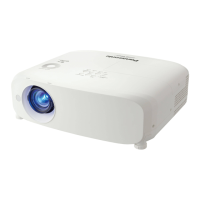
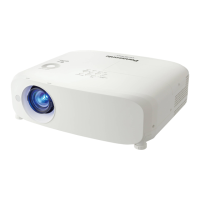
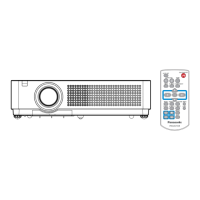

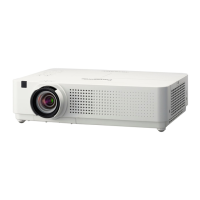
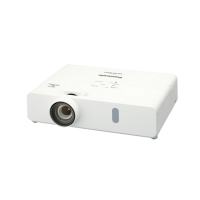
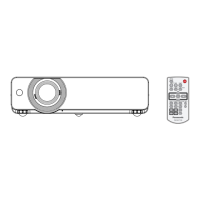
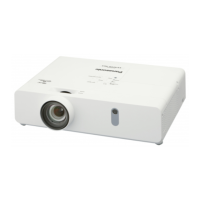
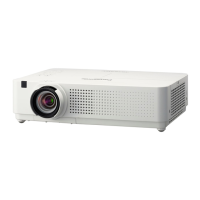

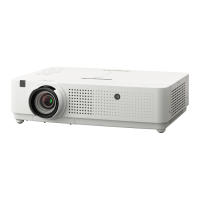
